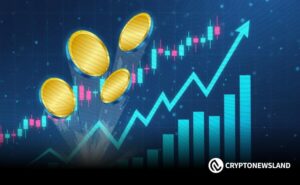2025 Trading Guide: Three Essential Trading Categories and Strategies Every Trader Should Know
It is very important to clearly identify the type of trading you are involved in and make the appropriate adjustments.
It is very important to clearly identify the type of trade you are participating in and make corresponding adjustments.
Written by: Cred
Translated by: Saoirse, Foresight News
As a discretionary trader, categorizing your trades is very useful.
Systematic trading and discretionary trading are not binary opposites or mutually exclusive.
In extreme cases, on one end is a fully automated trading system—always "on," managing every aspect of the trading process; on the other end is purely intuitive speculation—no rules, no fixed trading strategy.
Technically speaking, as long as you exercise any degree of discretionary power (such as turning off the automated system or manually adjusting position balances), it can be classified as "discretionary behavior," but such a definition is too broad and lacks practical reference value.
In reality, my definition of a "discretionary trader" may apply to most readers, with core characteristics including:
- Mainly executing trades manually;
- Analysis revolves around technicals (including key price levels, charts, order flow, news catalysts, etc.);
- Subjectively judging whether a trading strategy is effective and worth participating in;
- Having discretionary power over core trading elements: risk control, position size, entry point, stop loss conditions, target price, trade management.
It is important to emphasize that "discretion" should not be equated with "laziness."
Some traders might say: "Bro, look, no two trading strategies are exactly the same, so testing is useless—every situation is different anyway."
But excellent discretionary traders usually master detailed data of the markets they trade, develop trading strategy manuals, set market state filters, and keep trading logs to optimize performance, and so on.
When exercising discretion, they at least follow a general set of rules; as experience accumulates, the rules become more flexible, and the proportion of discretion in the trading process increases accordingly.
But this flexible decision-making power is earned through accumulation, not possessed out of thin air.
In any case, based on my experience and observation, most positive expected value (+EV) discretionary trading strategies can be categorized into the following three clear types (category names are self-coined):
- Incremental
- Convex
- Specialist
Each category is mainly distinguished by three core dimensions:
- Risk-Reward Ratio (R:R)
- Probability of Success
- Frequency
(Note: By combining risk-reward ratio and probability of success, you can roughly estimate the expected value of a trade, but for now, we simplify understanding through these three dimensions.)
Let’s analyze these three types of trades one by one.
Incremental Trades
Core Features: Low risk-reward ratio, high probability of success, medium frequency
These trades are key to keeping your account running smoothly and maintaining market sensitivity.
They may not be "eye-catching" or suitable for showing off on social media, but they are the "foundation" for traders—as long as you have some market edge, the returns from these trades can achieve considerable compound growth.
Typical examples include: market microstructure trading, order flow trading, intraday mean reversion trading, trading based on statistical patterns (such as intraday time-of-day effects, weekend effects, post-news release effects), and range trading during periods of low volatility.
The main risks faced by these trades are "edge decay" and "sudden market regime change."
But these two risks can be regarded as the "necessary cost of trading": intraday trading opportunities are inherently sporadic, and if you are on the wrong side during a regime change, the cost is often very high (refer to the fall of the Gaddafi regime for an understanding of the risk of counter-trend trading during trend reversals).
Incremental trades are a highly practical category: they usually deliver stable profits and occur frequently enough—not only smoothing your P&L curve but also providing effective information about the market and potential trends.
Convex Trades
Core Features: High risk-reward ratio, medium probability of success, low frequency
Most trades based on higher timeframes (such as daily or weekly charts)—especially those centered around rising volatility or sudden market regime shifts—fall into this category.
As the name suggests, these trades do not occur often, but when they do, as long as you can capture part of the large move, you can reap substantial returns.
Typical examples include: high timeframe breakout trades, reversals after failed high timeframe breakouts, high timeframe trend continuation trades, major catalyst/news-driven trades, trades based on extreme funding and open interest, and breakouts after volatility compression.
The main risks of these trades include: false breakouts, long intervals between opportunities, and high trade management difficulty.
Again, these risks are the "necessary cost of trading."
Usually, when participating in these trades, traders may need to try the same strategy multiple times, suffer several small losses before the strategy works (or it may never work at all). In addition, these trades typically have higher volatility and are harder to manage, so traders are more likely to make mistakes in execution—but this is precisely why they offer high returns.
In the crypto trading space, convex trades are often the main contributors to a trader’s long-term P&L. Proper position sizing, capturing major trends, and seizing breakout or trend reversal opportunities are key to keeping your equity curve from being eroded by fees.
In other words, the returns from convex trades can cover the fee losses, frequent trading costs, and volatility risks incurred in incremental trades.
Simply put, these are the so-called "blockbuster trades."
Specialist Trades
Core Features: High risk-reward ratio, high probability of success, low frequency
These are "once-in-a-lifetime" high-quality trading opportunities, such as the recent cascade liquidation events in the perpetual contracts market, stablecoin depegging events, key tariff policy news (during periods of significant policy impact), major catalyst-driven trades, and markets with sharp volatility spikes.
Typical examples include: capturing low timeframe entries and expanding them into high timeframe swing trades, arbitrage when spot and derivatives prices diverge significantly, cross-exchange large spread arbitrage, "off-market" quotes executed at extremely low discount prices, and providing liquidity in thin order book markets to earn returns.
Participating in these trades usually requires meeting one of the following two conditions:
- The market experiences abnormal volatility or a "break" (such as a price crash or liquidity drying up)
- Perfectly combining high timeframe trading logic with low timeframe execution strategies to form "snowballing" returns
The difficulty of the first condition lies in the extreme rarity of such opportunities; and when they do arise, most traders are busy dealing with margin calls or managing existing positions, with no time to seize new opportunities. Moreover, exchange system stability is often poor at these times, making execution even harder.
The difficulty of the second condition is that high timeframe price moves often appear highly volatile and noisy on low timeframe charts. This requires traders to precisely time entries and stop losses, and to be able to stick to low timeframe strategies and manage positions properly as the high timeframe trend develops.
The main risks of these trades include: extremely high skill requirements, extremely low frequency of opportunities, missing out due to being "busy surviving" when opportunities arise, and execution risks (such as slippage in thin markets, liquidation risk), etc.
These trades are extremely difficult, but catching just one can completely change a trader’s career.
It is worth noting that the appeal of these trades is also the source of their risk.
Therefore, it is advisable for traders to set aside a "crisis fund"—stablecoin funds that are not easily touched, specifically reserved for capturing such rare opportunities. This is a very wise approach.
Conclusion
I suggest you review your trading logs or strategy manuals and try to categorize your past trades according to the three types above. If you don’t have a trading log or strategy manual yet, this classification framework can also provide you with a starting point.
Another valuable insight (derived by "elimination") is that many types of trades are actually not worth your time. For example, "boredom trades"—these clearly fall into the category of "low risk-reward ratio, low probability of success, high frequency," and are an ineffective use of time and capital.
If you are a developing trader, it is recommended to devote most of your energy to incremental trades: accumulate market data, build trading systems, and optimize operational strategies through these trades, thereby accumulating enough capital and experience before gradually trying other types of trades.
You do not have to be confined to one type of trade forever.
A more valuable approach is to develop a strategy manual that covers all three types of trades. More importantly, set reasonable expectations for each type’s risk-reward ratio, probability of success, frequency, potential risks, and strategy patterns.
For example, using a convex trading strategy but managing it as if it were incremental is a mistake; similarly, using a convex trading strategy but sizing positions according to incremental standards is also a mistake (this is also my biggest weakness as a trader).
Therefore, it is very important to clearly identify the type of trade you are participating in and make corresponding adjustments.
I have not set specific numerical standards for risk-reward ratio, probability of success, or frequency, because these metrics are heavily influenced by market conditions and can vary greatly. For example, in a hot bull market, convex trade opportunities may appear every week; in a sluggish market, even incremental trade opportunities are something to be grateful for.
Disclaimer: The content of this article solely reflects the author's opinion and does not represent the platform in any capacity. This article is not intended to serve as a reference for making investment decisions.
You may also like
BlackRock’s Stance Leaves Altcoin Enthusiasts on Edge
In Brief BlackRock's Bitcoin spot ETF boosted confidence, defying expectations of Bitcoin's end. Altcoin ETFs could eliminate current institutional investor limitations, spurring market growth. Lack of BlackRock's altcoin ETF may limit long-term support, risking market disillusionment.

Oversold but Not Over: TRUMP, UNI, and PI are Primed for Recovery

Zcash (ZEC) Tests $300, Bulls Target $320 as Volume and Adoption Surge

Opendoor (OPEN) Breaks Falling Wedge on 4H Chart, Bulls Eye 144% Upside

